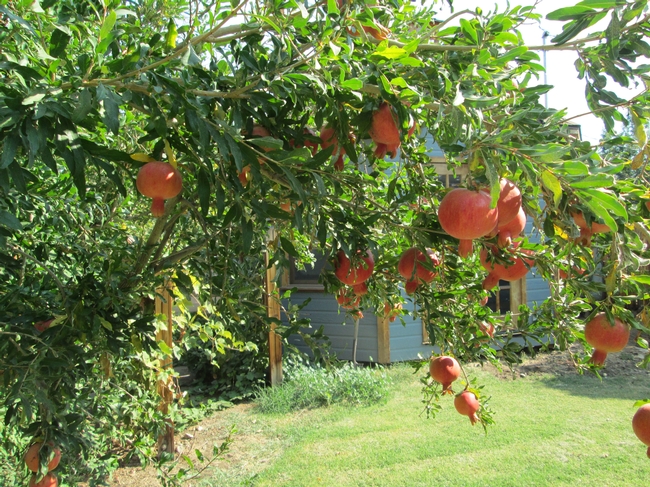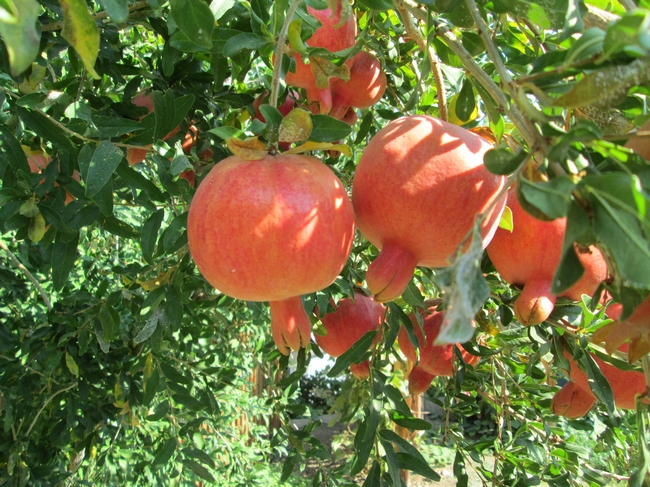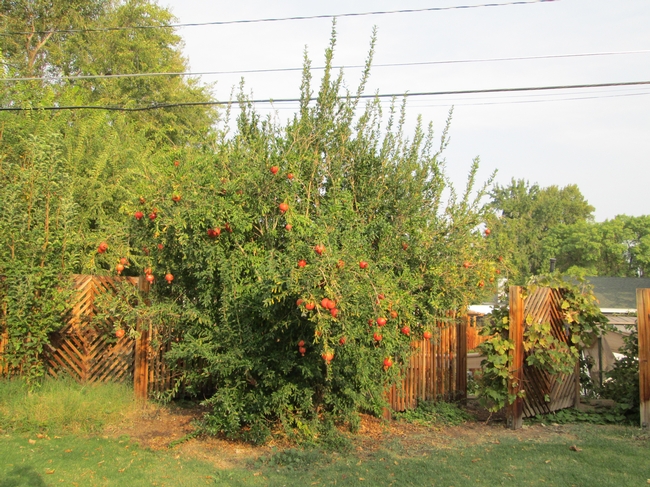If you enjoy pomegranates you may be delighted to know that they will grow in the Owens Valley. They originally come from areas such as Iran and the Mediterranean areas. There are many varieties available, each with its own characteristics – some are sweeter, some more acidic, some have soft edible seeds and others have harder ones, some are better for juicing while others are delicious eaten fresh. The fruits are high in polyphenol anti-oxidants, and flavonoids.
Here is what you need to know about growing conditions:
- Zones: 7 -10 but must have long hot summers and if growing in the colder zones some protection from the north is advisable. If they get cut down by severe frosts most will sprout again from the base.

- Exposure: Full sun.
- Chill hours: Most need only 150-200 hours which our area easily provides.
- Soil: Any good, well-drained soil, even if alkaline.
- Irrigation: Regular watering is needed, but most can withstand some drought.
- Pollination: usually self-fertile so only one need to be planted.
- Form: Pomegranates grow as large bushes which can be pruned to 8'-10'tall and about as wide, but they can also be trained into a tree form. Some varieties are upright while others have more lax arching stems. There are some varieties that are dwarf.
- Harvest time: Late summer for earliest varieties through fall. Once ripe they will split open after rains. If harvested at its peak fruit will store in a cool dry place for several weeks.
Pomegranates have small leaves, and a twiggy habit so can be used as a screen. They have quite large reddish/orange flowers and look attractive in bloom, while the fruit generally comes in varying shades of red, from brilliant to a rich dark red, or even pink.
They do take time to become established, often not even flowering for a few years, but then are reliable so long as there are no adverse climate conditions. The only variety that I have experience with in the Owens Valley is 'Eversweet' which was chosen because it needed the shortest season for the fruits to mature. It took about five years to begin to fruit and then presented us with grocery bags full and consistently cropped since, although this year it had only a light crop (shown). So far it has generally been pest and disease free. There are some varieties which are claimed to begin fruiting earlier.
Many newer varieties have been introduced so it pays to read the descriptions in the specialist fruit catalogs to ensure that you are getting the features that you want.
Finally we can be successful with a plant that does better in our hot summers than in the gardening Eden of the Pacific Northwest!
For pest and disease information on pomegranates see: http://fruitandnuteducation.ucdavis.edu/fruitnutproduction/Pomegranate/Pomegranate_Pests_Deficiencies/Pomegranate_Insect_Mite_Nematode/


